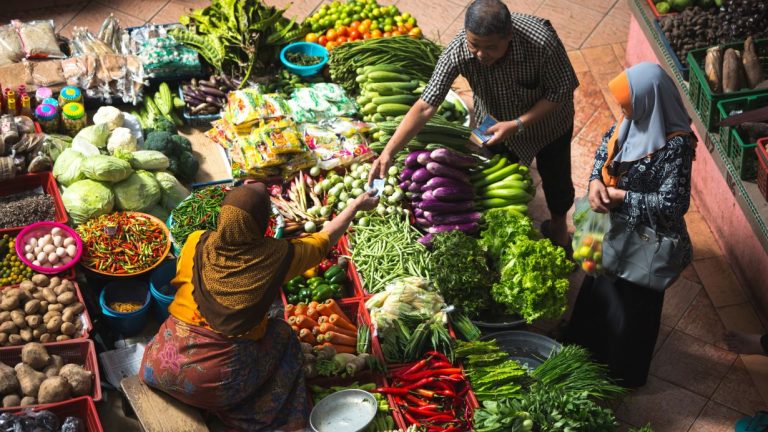Food Recommendations Look Different Worldwide
Being pregnant often comes with a myriad of questions, especially regarding what to eat and not to eat. Every country has its unique set of food recommendations, reflecting its cultural and nutritional landscape. From the accurate due date predictions to dietary advice, there’s a world of knowledge awaiting expectant mothers.
India: Tailored to Individual Needs
Indian guidelines are not just about what to eat but also at what time of the day, including a handful of nuts at 4 pm.2 Tailored to a woman’s BMI, these charts reflects the vast differences in nutrition status of the Indian population.2
Japan: Vegetables and Seafood
Japanese guidelines also offer a pregnancy food plan, but for each day of the week. In addition to recommending vegetables, the Japanese food plan has a rather strong focus on seafood.3
The Netherlands, Sweden and Finland: Quantity and Diversity
In the Netherlands, precise amounts for each food product are stated, but there is no schedule.4 Sweden and Finland both champion the benefits of a diverse diet and have no schedule. Their recommendations focus on balance and variety.5,6
United States: Prioritizing Safety
The U.S. takes a slightly different approach in which expecting mothers are primarily informed about food safety and how to avoid foodborne illnesses and harmful microorganisms. The focus is hence less on particular foods, but rather on hygiene practices when cooking.7 Pregnant women are for example given precise information on how to wash fruit and vegetables and instructions about how to heat certain foods.7
Universal Recommendations
Despite the myriad of recommendations and diverse pregnancy diets worldwide, some guidelines remain universal. These include the intake of folic acid supplements, the avoidance of alcohol, and the importance of a balanced diet combined with exercise.8
Conclusion
Pregnancy is a journey of discovery, from using a due date calculator to determine your baby’s arrival to understanding nutrition guidelines. If you feel stressed about what you can or cannot eat, take a deep breath and remember that mothers around the world eat very different diets and that healthy babies are born everywhere.9 With that in mind, check your country’s pregnancy diet recommendations and enjoy your meals!
| South India4 | Japan5 | The Netherlands3 |
| Early Morning 6.30 am milk 200 ml |
| |
| Breakfast 08.00 am 2 dosa (Indian lentil pancake) + 100 mg vegetable chutney | Breakfast Rice + grilled fish + dipping | |
| Mid-Morning 10.30 am 100 g seasonal fruit | Mid-morning Pickles + apple + tea | |
| Lunch 01.00 pm 4 roti (a type of bread) + 30 g meat + 50 g green leafy vegetables curry + 50 g salad + 100 ml curd | Lunch Rice + tofu with meat miso + starchy sauce + seaweed salad + clear soup | |
| Afternoon snacks 04.00 pm 100 g seasonal fruit + 30 g nuts | Snack Roasted green tea + Biscuits | |
| Dinner 08.00 pm 100 g rice + ½ Tur Dal + 75 g green leafy vegetables + 50 g vegetables + 100 ml curd | Dinner Pasta + salad | |
| Bedtime 10.00 pm 100 ml milk | Bedtime Milk soup + coffee + sherbet |
Examples of daily food plans (India and Japan) and food recommendations (The Netherlands) for pregnant women. Amounts per day.
Nutrition in Pregnancy: A Comparative Review of Major Guidelines. Obstet Gynecol Surv. 2020. Volume 75 (692–702) Tsakiridis I, Kasapidou E, Dagklis T, Leonida I, Leonida C, Bakaloudi DR, et al.
Nutrition in Pregnancy: A Comparative Review of Major Guidelines. Obstet Gynecol Surv. 2020. Volume 75 (692–702) Tsakiridis I, Kasapidou E, Dagklis T, Leonida I, Leonida C, Bakaloudi DR, et al.
Influence of Japanese diet consumption during pregnancy and lactation on lipid metabolism in offspring. Nutrition. 2019. Volume 58 (69–76). Ishikawa H, Guo X, Sugawara S, Iwagaki Y, Yamamoto K, Konno A, et al.
Wat kan ik wel en niet eten tijdens mijn zwangerschap?, Voedingscentrum [Web-page]. cited 2022 Aug 17. Available from:https://www.voedingscentrum.nl/nl/zwanger-en-kind/zwanger/wat-kan-ik-wel-en-niet-eten-tijdens-mijn-zwangerschap-.aspx
Bra mat när du är gravid. 1177 [Web-page]. cited 2022 Feb 19. Available from: https://www.1177.se/barn–gravid/graviditet/livsstil-och-halsa-under-graviditeten/bra-mat-nar-du-ar-gravid/
Äitiysneuvolaopas – suosituksia äitiysneuvolatoimintaan. Terveyden ja hyvinvoinnin laitos. 2013. Kansallinen Äitiyshuollon asiantuntijaryhmä.
Safe Eats from Food Safety for Moms to Be. FDA [Wep-page]. U.S. Food and Drug Administration. 2022 Jan 20 [cited 2022 Aug 17]; Available from: https://www.fda.gov/food/people-risk-foodborne-illness/safe-eats-food-safety-moms-be
WHO recommendations on antenatal care for a positive pregnancy experience. World Health Organization [Wep-page]. Geneva: World Health Organization; 2016 [cited 2022 Aug 17]. Available from: https://apps.who.int/iris/handle/10665/250796
Nutrition and maternal, neonatal, and child health. Semin Perinatol. 2015. Volume 39 (361–372). Christian P, Mullany LC, Hurley KM, Katz J, Black RE.
The photo is taken by Alex Hudson, Unsplash.

